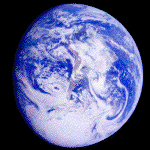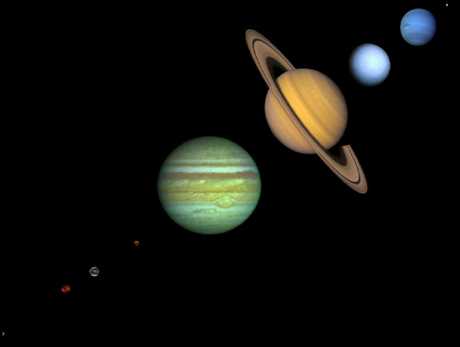



New Earth.com
The search for terrestrial planets.




Due to unforeseen human factors, the need to search for and locate a habitable terrestrial planet has moved to the forefront of scientific endeavor. The search for a "New Earth" is a hot topic in Astrobiology. This site is designed to help readers learn more about this search. We will explore answers to the questions of; How will we find this planet? How will we get there? What will we do when we get there?
In our search for a terrestrial planet to inhabit, we look first to our own solar system.


Looking at the nine planets in our solar system, we can quickly narrow the search by focusing only on the viable planets. This way of searching limits the field to one planet and a handful of moons.
The planet that seems to be an obvious choice is Mars.

Mars is an obvious choice for many reasons. Mars' proximity makes it especially attractive simply because we could get there. With an estimated travel time of 259 days, Mars is a planet we could reach without any new technology. It would be relatively simple to create a mission to get to Mars with the equipment necessary to "move in." However, Mars comes with it's own interesting set of problems. The lack of atmosphere on the planet means we would need to do some major modifications prior to mass habitation. The process is called Terraforming. This means we would create the atmosphere on the planet and in the process, create a complete biosphere capable of launching and sustaining life. There is still no concrete evidence that this type of artificial planetary evolution would work, however it is the best option for this type of planet.
For more information on Terraforming, click here: http://www.users.globalnet.co.uk/~mfogg/
Below is a video that shows what Mars might look like during the Terraforming process. As you can see Mars almost looks Earthlike. The only question left is the temperature. Some scientists believe that the temperature issue will take of itself because of the greenhouse effect. Some scientists believe they can introduce carbon into the atmosphere and artificially create the phenomenon. This change would hypothetically cause a warming of the atmosphere and make Mars more hospitable.
To view the video, simply move the
mouse over the image and it will play.
Video taken from Terrestrial Planet Finder web page.
If it is possible that to find the "perfect" planet, we will need to look outside our solar system.

This is an artist's rendition of what the surface of a moon around a distance planet might look like. The planet in the background is one we believe exists in orbit around a star, HD38529, located in the Constellation Orion. This star is approximately 137 light years away. The planet this moon is orbiting is a Jupiter size planet that orbits the star every 14.3 days. The planet is only .13 AU from it's sun. It is possible that this planet may not be habitable. There is however, another planet which is further out in the orbit which might be more hospitable, if we could get there. This is one of many possible planets where life, as we know it, has to possibility of flourishing. It is also one the closest we have located thus far. While 137 light years seems to be right around the corner, it is still a tremendous distance based on our current abilities with regard to space travel. To make this journey, a whole new technology must be created.
To see some of the problems with space travel over such a large distance, click here: http://www.hq.nasa.gov/office/pao/History/SP-4026/contents.html
To explore Earth and read other related information, click below.
http://www.seds.org/nineplanets/nineplanets/earth.html
To explore Mars and read other related information, click below.